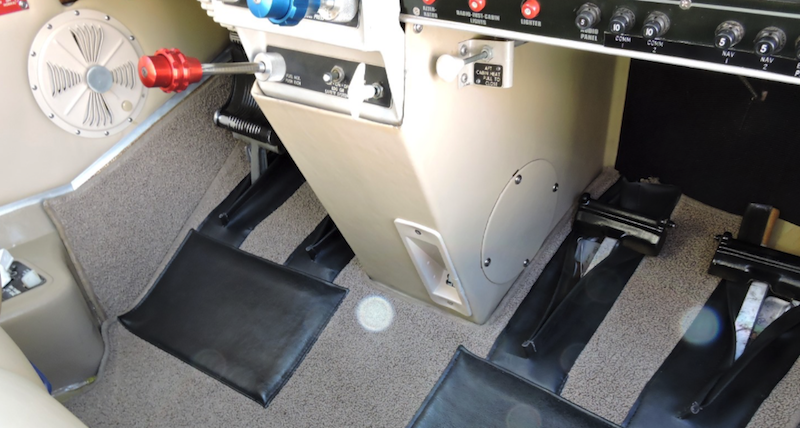
Beechcraft mechanic Larry M. offers the following guidance for those pulling
their hair out adjusting or repairing the barrel type gear indicator in
post-1964 Bonanzas:
They get out of adjustment for several reasons, but the most common is when
an upholstery man puts in screws in the bezel of the indicator, which are too
long, and they interfere with the rolling of the indicator. The lower screw is
key…#8 or #10, ¼" or ground shorter, sheet metal screw.
The procedure:
Remove clevis bolt from right pilots rudder pedal. Use a good light and a
mirror to assess the situation, or go by feel. Very hard to see back there. When
free, you can move the pedal to access the four screws on the round access plate
on the console, which goes from the throttle quadrant to the floor.
Remove the screws on the right side plate as well.
Place the aircraft on jacks, raise the gear. Looking from the pilot side, you
can see the 3/8" bolt over on the co-pilot side through the round access hole.
The wire which drives the indicator is secured by a 3/8"locking hex bolt and
nut.
Insert a 12" to 15" ¼" drive extension, with a breaker bar handle and 3/8"
socket through the pilot side hole, and place it on the nut head, which is
clearly visible at the bottom of the co-pilot side hole. From the co-pilot
side, use a 3/8" ratcheting box end wrench to loosen the nut. Adjust the
roller face of the indicator with your finger, to read "up", and then tighten
the nut.
Cycle the landing gear, and confirm that when the gear is down, "dn" shows in
the window.
Job finished, replace access plates, reattach pilot right rudder pedal to
brake cylinder, and cotter pin it.
Many thanks to Mike Thompson,
AVSTAR Aircraft of Washington,
Inc. for this
procedure. No service manuals, or Google searches bring up this necessary data.
The job is very doable by following the exact tools, and directions which are
provided above. Otherwise, mechanics are trying to remove the console,
tear out the floorboards, etc. All wrong! Even the bezel around the
indicator stays screwed on during the adjustment. On Barons, there is a
removable plate on the bottom of the fuselage which allows access for this job
PS: The aircraft I worked on was a V35A. Both As and Bs have the pilots
rudder pedals very close to the center console, and require the removal of the
bolt to the brake cylinder in order to manipulate the right pedal and remove the
round access plate. Apparently, some other models don’t require this precursor,
as Scott M. points out below.
Scott, M., S35 Bonanza owner, adds the following thoughts on this area:
The biggest frustration is keeping the indicator at the proper position while
tightening it’s clamping bolt on the actuating wire.
With the aircraft on jacks, gear up, front carpet removed, both round access
plates removed, loosen the clamping bolt nut from the right side with a thin 3/8
open end while holding the bolt head through the left access with a socket and
extension.
Once the indicator is slightly loose on the wire I slide a wooden
tongue depressor between the bottom of the console and the copilot floor board.
The depressor is positioned behind the movable plastic indicator and used to
position and hold it in place while tightening the clamping nut.
I have never had to mess with the brake pedals to gain access other than just
moving them around. This is on a '64 S35, your results may differ.
HERE is a complete thread on
BeechTalk discussing the
barrel indicator woes.